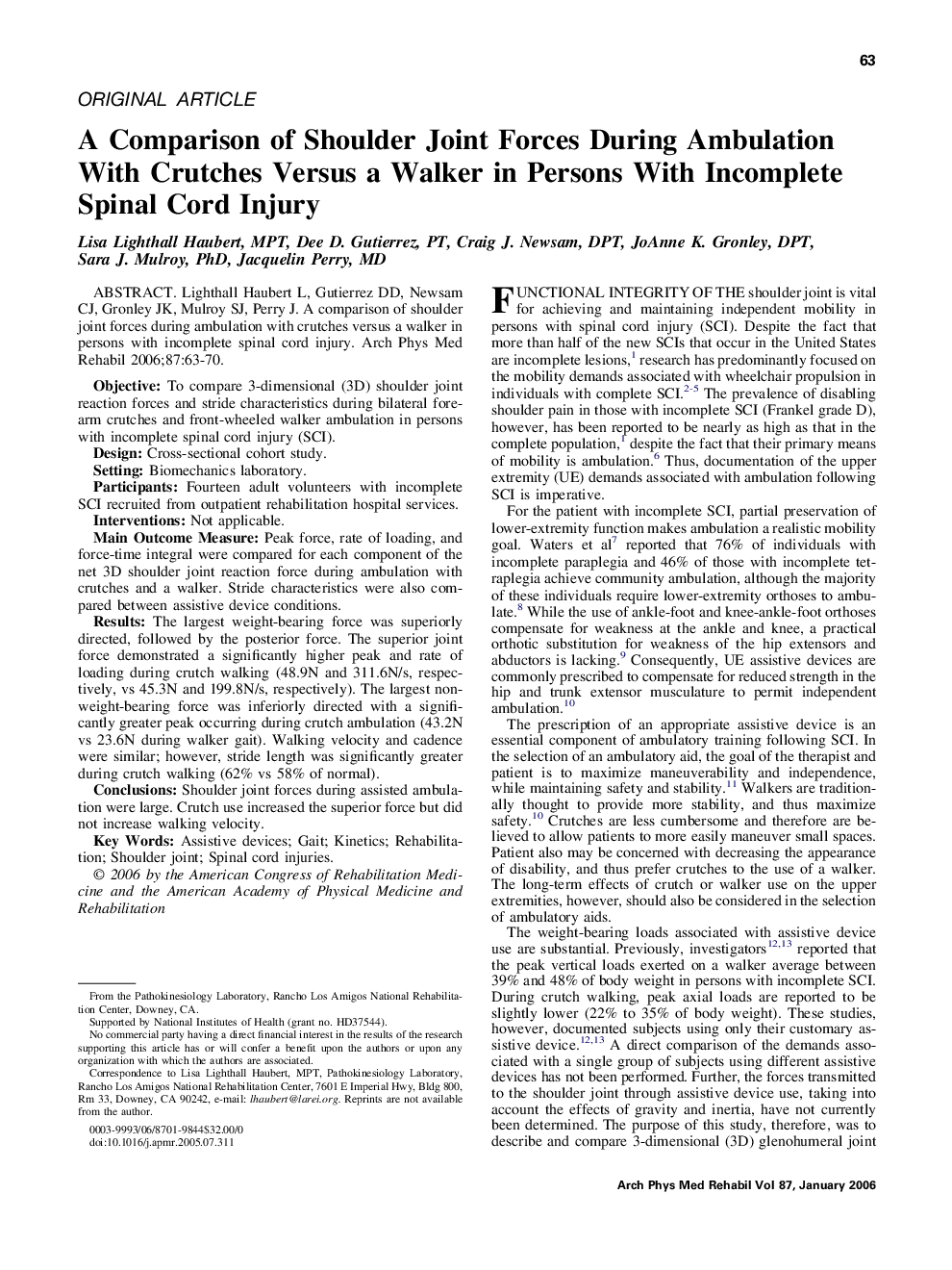| Article ID | Journal | Published Year | Pages | File Type |
|---|---|---|---|---|
| 3453270 | Archives of Physical Medicine and Rehabilitation | 2006 | 8 Pages |
Lighthall Haubert L, Gutierrez DD, Newsam CJ, Gronley JK, Mulroy SJ, Perry J. A comparison of shoulder joint forces during ambulation with crutches versus a walker in persons with incomplete spinal cord injury.ObjectiveTo compare 3-dimensional (3D) shoulder joint reaction forces and stride characteristics during bilateral forearm crutches and front-wheeled walker ambulation in persons with incomplete spinal cord injury (SCI).DesignCross-sectional cohort study.SettingBiomechanics laboratory.ParticipantsFourteen adult volunteers with incomplete SCI recruited from outpatient rehabilitation hospital services.InterventionsNot applicable.Main Outcome MeasurePeak force, rate of loading, and force-time integral were compared for each component of the net 3D shoulder joint reaction force during ambulation with crutches and a walker. Stride characteristics were also compared between assistive device conditions.ResultsThe largest weight-bearing force was superiorly directed, followed by the posterior force. The superior joint force demonstrated a significantly higher peak and rate of loading during crutch walking (48.9N and 311.6N/s, respectively, vs 45.3N and 199.8N/s, respectively). The largest non-weight-bearing force was inferiorly directed with a significantly greater peak occurring during crutch ambulation (43.2N vs 23.6N during walker gait). Walking velocity and cadence were similar; however, stride length was significantly greater during crutch walking (62% vs 58% of normal).ConclusionsShoulder joint forces during assisted ambulation were large. Crutch use increased the superior force but did not increase walking velocity.
